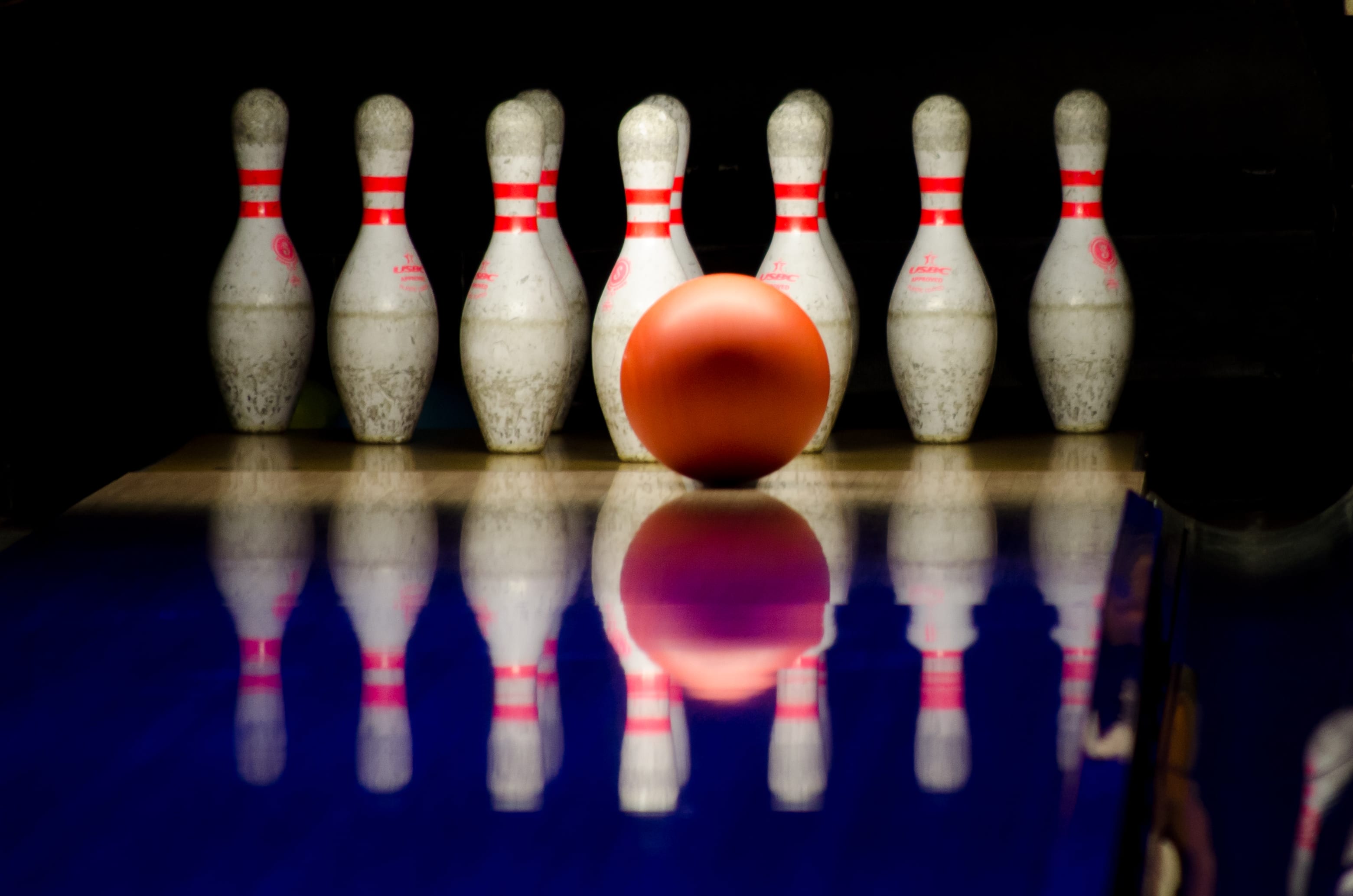Who’s the MVP of your local bowling alley? Easy. “The mechanic,” says Greg Pasdiora, president of International Bowling Lane Specialists. “He’s definitely the most important person in the building. The unsung hero.” Why? Even the smallest tilt in the bowling lane can send balls into the gutter — and players, pros and “Big Lebowski” wannabes alike, storming up to the manager’s desk to complain. Scoreboards go on the fritz. Frustrated players hurl anything from shoes to toasters (no joke) down the gutter. And whether it’s someone on site, or a third-party outfit, your local bowling service mechanic deserves a little recognition.
From 3-D scoreboards to glow-in-the-dark pins to gourmet food, bowling centers everywhere are upgrading their alleys to draw gadget-obsessed audiences back to the alley. Aside from eco-friendly cleaners and new synthetic lanes, however, the fundamentals of bowling-alley maintenance have stayed largely the same for more than 50 years, says Tom Schemm, owner of Schemm Bowling Inc., a Wisconsin-based servicer and distributor of bowling equipment. Here’s a look at what it takes to keep it all rolling:
Smooth the Lanes
Keeping lanes dry and level is probably the most critical component of a smoothly operating bowling alley. Streaking oils from the daily onslaught of 16-pound balls can wreak havoc on the ball’s direction — not to mention a player’s sanity. And even the slightest tilt in the lane’s surface can send would-be strikes into the gutter. Aside from daily cleaning, lanes undergo a complete resurfacing every two or three years. Outfits like Jayhawk Bowling Supply use a variety of sanders to smooth out lanes and remove oils and other residues. Once dry, the lanes are treated with a combination of base coats, topcoats, sealers, and applicators using a machine that looks a lot like an old lawnmower. To reduce costs and maintenance times, some alleys are replacing their classic hardwood floors with plastic-like synthetics that eliminate the need for sanding and are more durable, according to Pasdiora.
Adjust the Pinsetters
The pinsetter descends once a ball has struck the pins, sweeps up the fallen ones and gently replaces those left standing for a  player’s second throw (or, in the case of a strike, neatly places the full set of 10 in place for the next player). Traditional pinsetters look complex, but turn out to be simple in design and operation. “The only electronics on the pinsetter are some relays and contactors that run the motors, but otherwise it’s all mechanical,” says Schemm, who specializes in pinsetter maintenance. Pinsetters need to be cleaned almost daily, and their parts wiped down at least once a week. The most common problems with pinsetters are lock failures, stretched belts and clutch-and-pulley malfunctions. Most jams and other repairs, says Schemm, can be handled using screwdrivers and wrenches.
player’s second throw (or, in the case of a strike, neatly places the full set of 10 in place for the next player). Traditional pinsetters look complex, but turn out to be simple in design and operation. “The only electronics on the pinsetter are some relays and contactors that run the motors, but otherwise it’s all mechanical,” says Schemm, who specializes in pinsetter maintenance. Pinsetters need to be cleaned almost daily, and their parts wiped down at least once a week. The most common problems with pinsetters are lock failures, stretched belts and clutch-and-pulley malfunctions. Most jams and other repairs, says Schemm, can be handled using screwdrivers and wrenches.
Check the Ball Returns
Gravity and momentum shuttle balls from the pin area back into players’ hands, thanks to conveyor belts under the lanes and a lift mechanism that propels balls upward from under the lane into the ball rack next to the players. Simple enough, except the drive belts lose their tension, the steel rails that carry the balls under the lanes and the v-belt pulleys are all prone to breaking down if not properly cleaned or regularly serviced.
Troubleshoot the Electronics
These days, scoring systems can be fairly high-tech, with 3-D graphics and games. Some just feature what’s important…your score. But all run on software which, like any computer program, are prone to glitches. The makers of scoring systems generally have a 24/7 technical support line to help troubleshoot. But if a monitor is busted, the in-house maintenance crew will inspect and replace it if needed.
Recondition or Replace Balls and Pins
Pins need to be stored in a cool, dry place, cleaned once a week, rotated every two weeks and replaced every two to six months. Balls too get damaged by excessive cold or heat. Oil can build up on balls and the pores fill with dirt, which is why balls also need to be regularly wiped and polished. Every 60 to 80 games, balls are resurfaced using a ball spinner and sanders to remove scratches.
The job of a bowling-alley mechanic isn’t just critical to a successful operation, but also rife with the unexpected. Schemm remembers being called to a job when a player’s fingernail jammed the pinsetter reset button. Pasdiora of International Bowling Lane Specialists once saw someone throw a ball through a ceiling tile, only to watch it come crashing down onto the lane. And players throw all kinds of objects down the lane — themselves, basketballs, billiard balls and, once, even a toaster.


how to replace or fix my ball return motor
Good day.if there is a lacking pin when its already set. What is the best way to fix.
we have five pin machines made by brunswick and the problem we have is stings getting tangled so tight that we cannot get them to release do you have a solution
Anyone in or around the Houston, TX area that can work on the electronics and QUBICA equipment? If so please contact me ASAP.